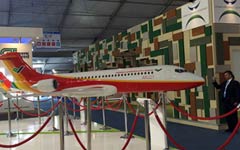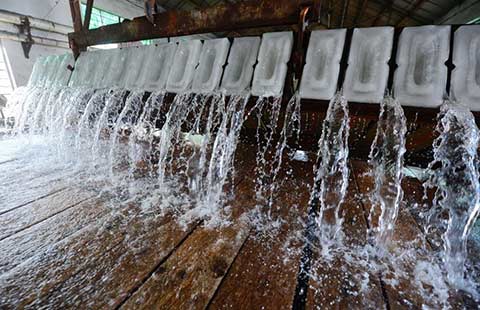Low-altitude airspace reform put on fast track
By Wang Wen (China Daily) Updated: 2014-07-23 07:17A new regulation for low-altitude airspace management is expected to be unveiled by the end of the year in China, opening a new chapter for the general aviation industry in the country, experts said on Tuesday.
According to Gao Yuanyang, director of the General Aviation Industry Research Center at the Beijing-based Beihang University, the draft regulation has already been sent to key industry personnel for feedback.
He declined to disclose any further details but said the new rules will help spur general aviation in China and create unified standards for the industry.
Restrictions on use of low-altitude airspace have for long limited the development of the general aviation industry in China as most of the civil flights operate in the low-altitude airspace below 1,000 meters.
|
 |
 |
The low-altitude airspace will be divided into four categories based on the different control levels - controlled, surveillance, report and contact flight airspaces. The draft also sets the specific areas for the four kinds of airspace, the report said.
The controlled airspace has the highest security level, and flights are required to accept almost all control orders, including air traffic control, flight information, weather and warning information.
In the other three types of airspace, there are no air traffic control services, which means the flights do not need prior approvals from the authorities.
Tracking services for these flights will be provided upon request from the concerned people, the report said.
The regulation also suggests flexibility in the four types of airspace so that the borders can be blurred when required. In such cases, more low-altitude airspace would be opened to general aviation industry when the airspace is vacant.
The draft calls for the establishment of a comprehensive air traffic control system.
Encouraged by the report, prices of some general aviation-related stocks have already seen healthy upswings. However, some analysts warn that it is still too early for such optimism as it may take some time for China to fully open up its low-altitude airspace.
"We've heard similar reports about the country planning to open up its low-altitude airspace in the past, but we're disappointed at the slow progress," said Wu Xiuqian, an analyst from the Beijing-based Qianzhan Industry Research Institute.
Statistics from the institute show that the growth rates of the general aviation industry in 2012 and 2013 were both under 10 percent, although the rat reached 25 percent in 2011 due to some policy encouragement that year.
- Smartphone maker Xiaomi launches latest flagship device
- China to contribute to new global trade system
- Xiaomi prepares for peak sales period with its new smartphone
- Dagong debuts in LatAm with its Suriname ratings
- Low-altitude airspace reform put on fast track
- Shanghai FTZ to get Artemed hospital
- IMAX, partners to expand theater footprint in China
- Realty mogul sets up Harvard education fund















